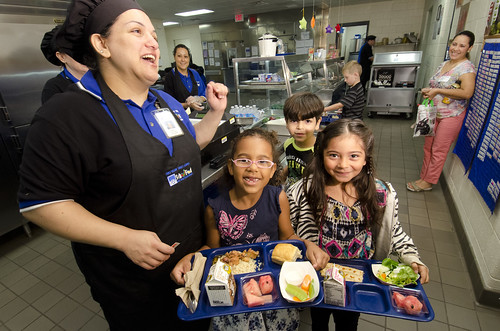
The fall season has arrived and with it the National School Lunch Week celebration! During the second week of October, USDA recognizes the important role school meal programs play in providing healthy, appetizing foods to their students. Over the last several weeks, USDA leaders visited schools to experience their meal programs first hand. And they were quite impressed! Now more than ever, today’s schools encourage healthy choices by featuring creative dishes and a variety of fruits and vegetables. USDA also got the chance to tour school gardens that harvest fresh ingredients and allow students to learn where their food comes from. It was exciting to see the many ways schools get students excited about health and nutrition and the important strides made to secure a healthier next generation.
After only three years since the updated nutrition standards were implemented, more than 96 percent of schools nationwide are meeting the standards. The impact is nothing short of inspiring. School lunch revenue has increased by up to $450 million; teachers report that students are more attentive in the classroom; and a Harvard study found students are now eating more fruits and vegetables!
USDA wants to continue that momentum, so we ensure that a wide range of resources, trainings, tools, and grants are available to support and empower school nutrition professionals. The “Healthier School Day” webpage provides nutrition curricula, culinary techniques and learning videos. Our “Team Up for School Nutrition Success” initiative offers a mentorship-based hands-on training to school nutrition professionals. For those interested in incorporating locally-sourced foods into school meals, the Farm to School program grants can help. If looking to fight childhood hunger and decreasing administrative burden, an excellent alternative is the Community Eligibility Provision which allows schools in high-poverty communities to increase access to food by offering meals at no cost to all students.
USDA may provide a variety of resources, but it’s the hard work and commitment of educators, school nutrition professionals, and school administrators that truly make the difference. Their dedication has helped plant the seeds of change in school meal programs. But don’t just take our word for it. This National School Lunch Week, we encourage you to see for yourself: Join your child for a school meal or volunteer to be on your school’s wellness committee. And be sure to thank your school’s staff for everything they do to help raise a healthier community.
